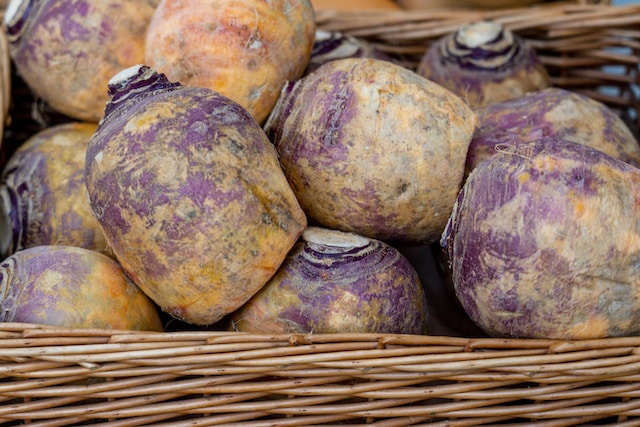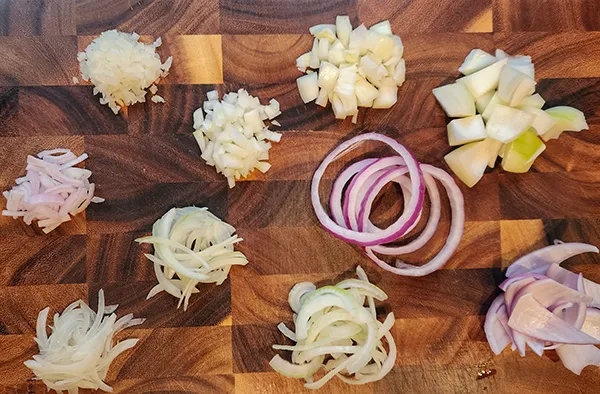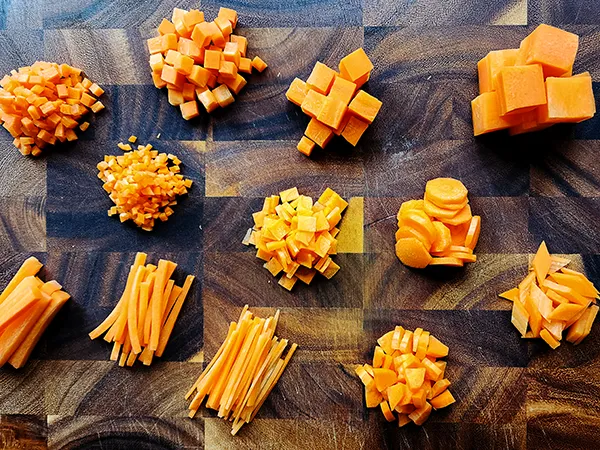How to Cook Vegetables: 9 Delicious and Easy Methods
Vegetables are packed full of essential vitamins and minerals, making them an important part of any healthy diet. “Eat more veg!” they say, but what if you don’t know how to cook vegetables?
Cooking vegetables doesn’t have to be boring and difficult. In fact, there are many very easy and nutritious ways to cook veggies!
Unlock 9 simple and efficient ways to prepare vegetables that will help you meet your daily nutritional needs without spending a lot of time in the kitchen.
From chomping down on crunchy raw veggies to sinking them in olive oil while braising, this post will delve into various methods to ensure you know exactly how to cook any vegetable you like.
How to cook vegetables?

Raw Vegetables
Raw vegetables are a great way to get your daily dose of vitamins and minerals. Eating them raw means you don’t have to lose any nutrients through cooking. Plus, they can add a crunchy texture and unique flavor to salads or sandwiches.
However, there are some downsides to eating them raw that should be considered when deciding how to prepare them. Raw veggies may contain bacteria that could lead to food poisoning if not properly washed, and some people find the taste too strong for their liking.
Additionally, certain types of vegetables – like root vegetables need to be cooked for their nutritional content to be released.
How to eat raw vegetables?
The best way to do this is by washing them thoroughly with clean running water, rubbing or scrubbing them gently with a vegetable brush if necessary, and removing any bruised or damaged parts.
It is also important to use separate cutting boards and utensils for raw vegetables to avoid cross-contamination. Once they are washed, you can chop veggies into bite-size pieces, add them to salads, or sandwiches, or eat them as is.
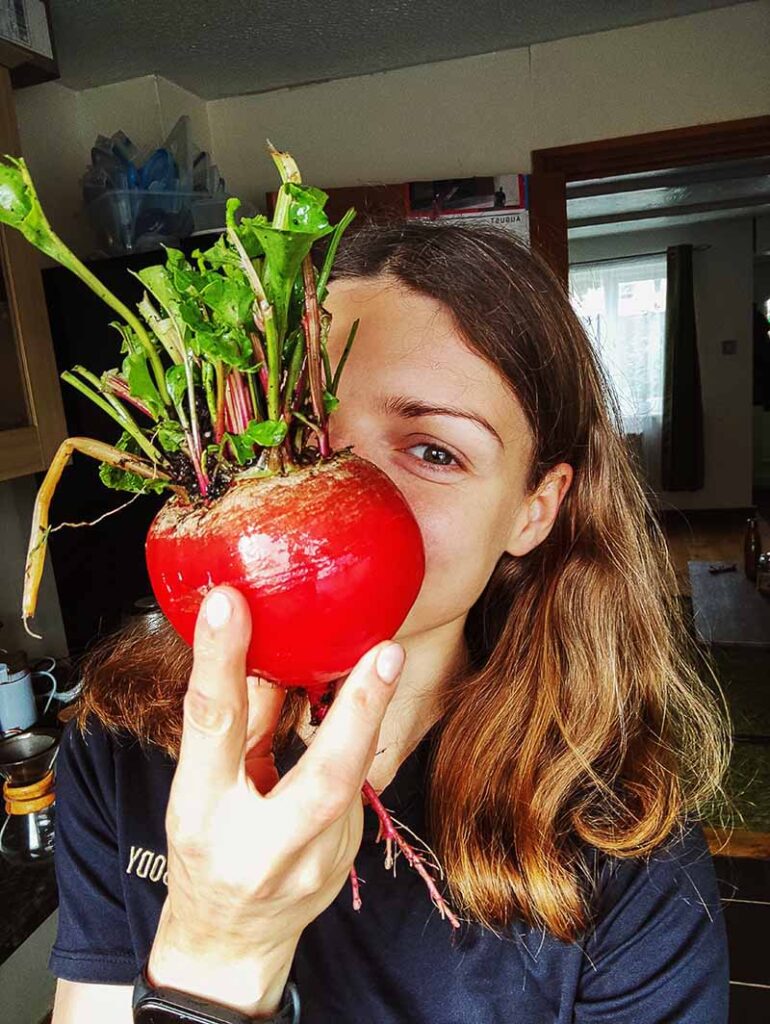
So is raw better?
When it comes to eating vegetables raw or cooked, certain types benefit more from one method than the other. Tomatoes, bell peppers, cucumbers, radishes, carrots, and all leafy greens such as spinach and kale retain their nutritional content best when eaten raw, as cooking can cause them to lose some of their very valuable vitamins and minerals. If we talk about root vegetables like sweet potatoes or swede, no question that cooking them will provide you with the best nutritional content.
Boiling vegetables
It’s easy to learn how to boil vegetables and also a great healthy way of cooking them! This method requires the least amount of preparation and can help preserve much of the nutritional value of your vegetables, which makes it one of my favorite methods for most vegetables. You just need to chop up some vegetables and place them in water.
There are two ways of “boiling”.
You can blanch them meaning you add vegetables to already boiling water, boiling them for a few minutes, and then putting them in ice-cold water.
Also, there is simmering, which refers to adding vegetables to the pan with cold water and then putting it on the stove and cooking on medium heat, usually used for harder veggies.

While boiling is a simple method, it is important to note that some vegetables can become waterlogged and lose nutrients when boiled for too long. To avoid overcooking, I recommend cooking vegetables until they are tender but still firm to the bite.
It is worth noting that some water-soluble vitamins and minerals can be lost during the cooking process. To maximize the nutritional benefits of your vegetables, consider steaming or roasting them instead.
Steaming vegetables
This is a bit more complicated than boiling, yet everyone should try steamed vegetables. The vegetables lose fewer nutrients and vitamins, which makes it by far the best way to enjoy your vegetables in terms of nutrition.
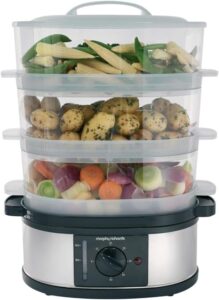
To steam vegetables, you can use a bamboo steamer, a metal steamer basket, a metal colander, or a regular pot with a steamer insert.
Fill the bottom of the steamer with about an inch of water, making sure the water level is below the steamer basket. After bringing your water to a boil, add in the veggies you previously cut up place them on top of the steamer, and put a lid on the steamer if possible. Steam vegetables for 4-8 minutes until crisp and tender, season with salt, and enjoy. Such a great way to cook vegetables without losing nutrients.
Sauteing vegetable
If you want something more filling try sauteing. With sautéing, you can effortlessly turn your vegetables into a delicious and hearty meal! All you need is a high-sided skillet, a few tablespoons of extra virgin olive oil, and your favorite vegetables.

Begin by heating the skillet over medium heat. Once it’s hot, hit it with oil, and toss in your vegetables like green beans, asparagus cauliflower, and seasonings.
When the vegetables start to color, stir them often so they don’t burn or stick to the pan. Turn down the heat if they’re browning too quickly. If needed, add a splash of water, broth, or butter if feeling really naughty.
Stir fry vegetables
Although the terms sauté and stir-fry are often used interchangeably, they actually refer to two entirely distinct cooking techniques. Both methods are great for quickly cooking small pieces of food, but stir-frying is more specialized for Asian cuisine and requires higher heat and constant movement while sautéing is more versatile and can be used for a wider range of ingredients and dishes.

If you’re aiming for an authentic stir-fry, you’ll require a wok and a certain level of proficiency with a chef’s knife, as the vegetables are traditionally sliced into thin strips.
To create stir-fry vegetables, heat your wok over high heat add a tablespoon of peanut oil, drop your favorite sliced veggies, and cook for 4-5 minutes. Mixing frequently is important during the cooking stage, as you don’t want anything to burn.
Grilling Vegetables
Grilling is a very easy way of cooking your veggies. Grilling adds flavor and nutrition while keeping them healthy. Not only does grilling vegetables lock in their natural juices, but it also adds smoky notes that can really enhance the flavors. Plus, it’s an easy method of cooking that doesn’t require much skill, so anyone can do it.

For your next cookout, I highly suggest grilling eggplants, zucchinis, and peppers – they make an amazing combination. Mushrooms, corn on the cob, and asparagus also are very tasty when grilled!
To get started, prepare the vegetables by cutting them into similar-sized pieces. This will help ensure that they cook evenly and quickly on the grill.
Next, brush the vegetables with a bit of olive oil to prevent sticking, and add some salt and pepper for flavor. Then preheat your grill for at least 10 minutes, it needs to be very hot before adding the vegetables in an even layer. If it’s too wet outside to fire up your outdoor grill, why not try one of these indoor kitchen grills?
Roasted or baked vegetables
Roasting vegetables is one of the easiest and healthiest cooking methods. You don’t need to constantly check on them and worry about them turning flavourful. It’s never been simpler to make a delicious side dish of roasted vegetables.

Simply select your favorite veggies, season them with extra virgin olive oil and spices like cumin and coriander for extra flavor, arrange them in one layer on your baking sheet, then bake at 375 degrees until they’re golden brown and tender about 20-25 minutes. Delish!
You can even customize the veggies with different spices to make your meal more interesting. Experimenting with roasting times and temperatures will allow you to find the perfect balance of crispiness and flavor. I encourage everyone to try green beans and Brussels sprouts, or any root vegetable will taste amazing using this method of cooking vegetables.
Microvewing vegetables
Yes, you can throw vegetables in the microwave if you are short on time. Nuking your veggies is an effortless way to grab your daily servings of vegetables in a flash!

Simply cut up your desired vegetables into smaller pieces, lay them out in an even layer on a microwave-safe dish, add a splash of water, cover with plastic wrap, and cook for 2-5 minutes. Adding just enough water will steam the veggies while they cook and soften them perfectly. Exercise caution, though! Some microwaves are extremely powerful and can potentially annihilate your vegetables if you’re not careful.
Braised vegetables
Although cooking veggies this way may not be the most time-efficient, it can be quite enjoyable since there are so many options and flavors to explore. Braising is a unique way of preparing vegetables, that enhances their natural flavors and you end up with crisp-tender results.
All you have to do is combine some vegetables, stock or butter, and seasonings together in a pan, cover it with a lid or foil, and simmer it over low heat until perfectly tender. This method of cooking allows the vegetables to remain juicy while gradually releasing their flavor into the liquid.
Adding ingredients such as garlic, onions, herbs, spices, lemon juice, and soy sauce can add wonderful layers of taste to your dish. This method of cooking is not that hard, however, it does require a longer time for preparation and if you use butter as your liquid it won’t be very healthy. If you’re looking for an exciting way to take your favorite veggies to the next level – give braising a try!

FAQ
Why would you want to cook and eat vegetables?
Vegetables are an essential part of any healthy diet, as they provide essential vitamins, minerals, fiber, and other nutrients that our bodies need to stay healthy. Eating a variety of vegetables is vital to getting your body’s functions in order. Cooking them enhances their nutrition and flavor.
What is the best way to cook vegetables?
The best way to cook vegetables depends on the type of vegetable and the desired texture. Generally, lightly steamed or boiled vegetables are ideal as they retain most of their nutrients while still providing great flavor. Grilling and roasting can bring out a wonderful smoky flavor in some vegetables, while stir-frying is an excellent cooking method for quick meals with a variety of textures.
Each cooking method brings out unique flavors in different types of veggies, I talk more about cooking methods in my post about learning to cook like a chef!
What are the 9 methods of cooking vegetables?
boiling
steaming
roasting
sautéing
stir-frying
grilling
microwaving
braising
How should vegetables be cooked for the most flavor?
For the most flavor when cooking vegetables, roasting and grilling are great options. Roasting helps to bring out natural sugars and caramelized flavor in many different types of veggies. Grilling is another way to enhance the flavors of your favorite vegetables and give them an irresistible smoky taste with a char-grilled texture.
Braising can be used for those looking for an extra depth of flavor as it allows aromatics to slowly infuse the vegetables in a liquid such as stock or wine along with other seasonings like herbs and spices. All these methods are great ways to cook vegetables that will guarantee a delicious meal!
How to make vegetables tasty?
Making vegetables tasty can involve a variety of methods. One way is to season with herbs and spices; adding fresh or dried rosemary, thyme, garlic, onion powder, sea salt, and black pepper can enhance flavors while keeping your vegetables healthy.
Another technique is to caramelize them by roasting or sautéing in olive oil until they are golden brown and crispy on the outside. Finally, you can use flavor-packed ingredients like balsamic vinegar, lemon juice, or honey for an extra burst of sweetness.
To really bring out intense flavors in your veggies, try combining different cooking techniques such as roasting and grilling to create unique dishes with complex taste profiles!
How long should vegetables be cooked?
Vegetables should be cooked for a short time, usually around 3-10 minutes, some vegetables like roots may require a lot more time for example swede or celeriac will take 30-40 minutes.
The key is to watch them closely since overcooking can cause some veggies to become mushy or overly soft. When properly cooked, most vegetables will be bright in color with a slightly crisp texture.

Conclusion
Cooking vegetables can be a great way to make them tasty and nutritious. It doesn’t matter if you’re a beginner or a professional chef, you can always take your vegetable dishes to a whole new level of deliciousness. You can experiment with different cooking methods or seasonings like herbs and spices. Go outside of the box with marinades, and use flavor-packed ingredients such as balsamic vinegar or honey to create unique dishes with complex taste profiles.
Ultimately, finding the perfect balance between time, temperature and seasoning will guarantee delicious results every time!
Now you know how to cook vegetables healthy and easy, so get started and have fun!
Hopefully, this blog post has given you plenty of ideas on how to cook vegetables, and if you feel ready to get started, read my blog post on how to cook tenderstem broccoli.
Read my other knowledge bites and remember, take it easy – one bite at a time!

